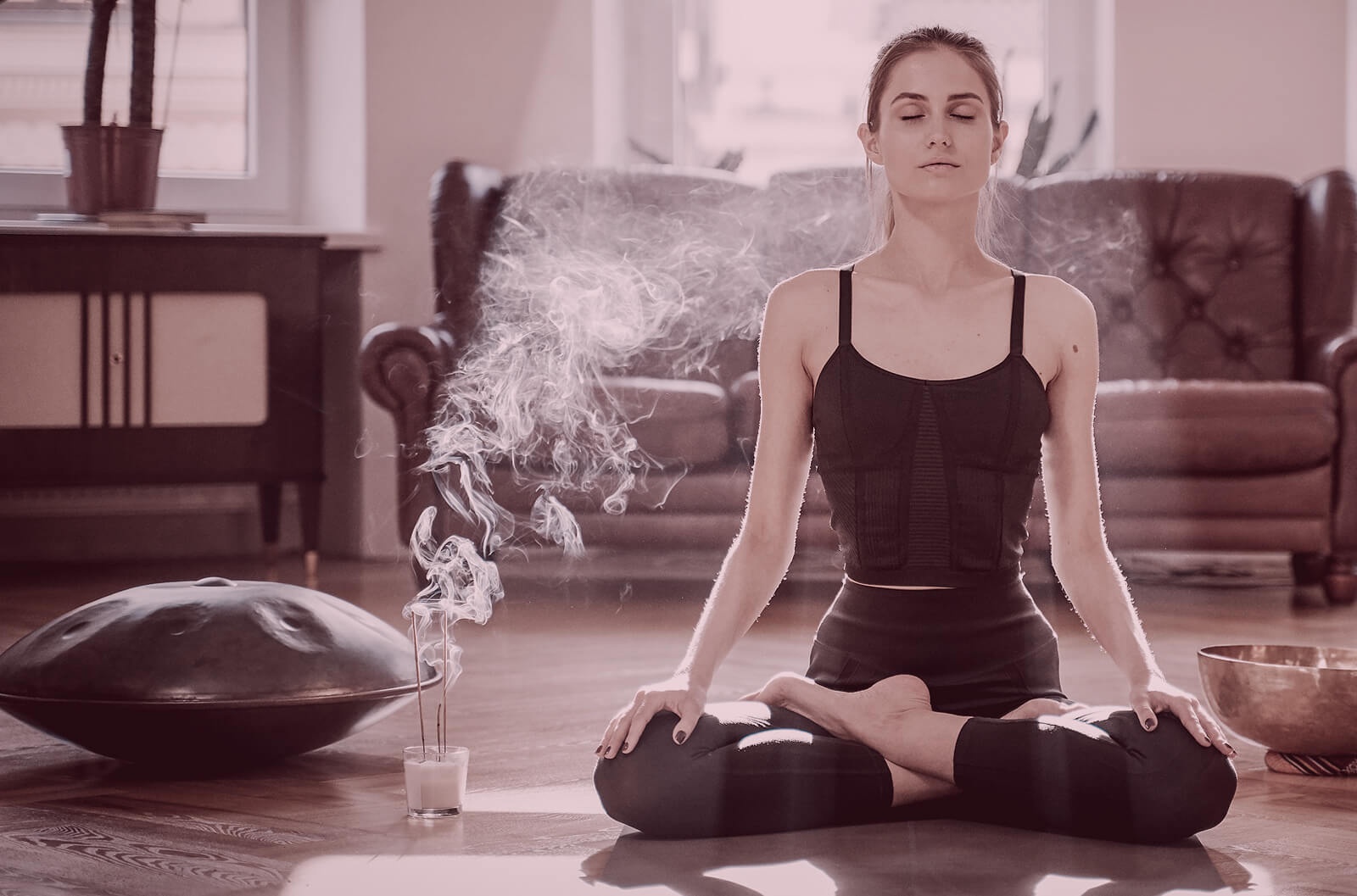MEDITATION
Meditation is practiced worldwide and has been very popular with people who want to decrease their stress and anxiety levels. It is no longer a practice only for monks and Buddhists it became a widely practiced coping strategy that is supposed to be more intuned with your body and mind. It brings a sense of composure, organises thoughts, and lets you acknowledge your feelings.
If practiced regularly meditation can give you a mental set of tools to be able to make more sense of the world, surroundings, and more importantly your thoughts and feelings. Meditation helps to see your feelings more clearly and let them be within you rather than invade your body and mind. Undeniably all of us have thoughts and emotions, which we cannot control. Nevertheless, we can decide if we act on those inner voices and feelings. Practicing the focus on our body and being more intuned with the ‘here and now’ will allow you to sit still and observe what is going on inside of your mind instead of living in an overwhelming tornado of moods swings and unwanted outcomes of decisions made in a heat of the moment.
The clarity that meditation can provide can be a life-long mechanism that you can access and use at any point in time to calm down, reevaluate the station, and make the right, objective, and balanced choice. It not only allows you to have more clarity but be more courageous about your life and dreams. Calmness gives you the opportunity to speak in front of crowds with a newfound sense of security and adequacy or ask for that well-deserved promotion that you were longing for. Boldness and hunger for a better life come from a deeper sense of security and confidence which mediation can provide.
Position for Meditation:
Legs and arms uncrossed if you want to lie down or sit down on a chair (Egyptian Position).
The most common position is the crossed-leg position sitting down on a floor (Quarter Lotus Position). If you are more flexible you can try Full or Half Lotus Position.
Here are some more options and demonstrations:
https://mindfulminutes.com/how-to-sit-for-meditation/
SO COME ON!
Start today with those exercises. Make it 2-5 minutes per day if you are new at this and increase to 10-15min per day.
Give ourselves few months to have some results and do not get discouraged!
I have heard so many times: ‘It’s just not for me’ or ‘This isn’t working’
If you do not give it a decent shot it won’t work, I can promise that. But being consistent is the key here. If meditation really doesn’t work for you (after those few months of hard work!) try Mindfulness exercises in the next post.
Basic Mind Processes During Meditation
If some thoughts or feelings come to you perform a process that I also recommend using with mindfulness exercises. When they come try to capture them in a bubble and give them a brief moment on a stage so that they can give you a message that they carry. (what is the purpose of a certain thought or a feeling?).
Then do a simple classification:
Is it a Thought or a Feeling?
Is it Positive / Negative or Neutral?
Is it Judging you or Not Judging you?
Then release this visitor, and you can watch that bubbe float away from you.
It’s ok if thoughts and feelings come back, just do the same process. It is a great practice and the more you do it the easier it gets. This is the most important process during your exercises. You can deviate with types of visualisation depending on the exercise but the primary rules stay the same.
Capture. Get the underlying message/purpose. Classify. Release. Go back to the exercise.
To grasp the idea behind it please do the Mind-Watching Exercise and use it for your daily meditation and mindfulness practice or stick to the ‘Bubbe Wand Procedure’ which is used during a guided meditation that you can find below. Those procedures are pretty much the same but one uses white room visualisation and the other one a bubble wand.
Mind-Watching Procedure
Sit comfortably and close your eyes. Start taking deep and calm breaths using your diaphragm, focus your attention on your breathing.
Now imagine that your mind is a white room with 2 doors at the beginning of your mind and the other one at the end. While you are focusing on breathing thoughts will come, it’s only natural that they will. You can let them in through the front door of your mind. Then you can classify them as judging or non-judgemental. The point of the exercise is to simply observe the thoughts which are coming in, not to act on them or have an emotional reaction to them. When you observe the thought and acknowledge it you can let it out through the back door, but do not try to push it out.
This exercise allows your thoughts to have their brief moment on stage and then the opportunity for you to let them go without a reaction.
Exercise
Listen to the audio recording below and try to follow the instructions.
Alex Player - Audio player for WordpressWARM-UP EXERCISE FOR YOUR MEDITATION SESSION
Start with just focusing on your breath, think ‘breathe in’/’breathe out’. Thoughts will come but always reorient yourself back to focus on the breath. You can take any comfortable position. Usually, for meditation, it is good to sit on the ground with your legs crossed and your hands on your knees straight back. In this position your chakras aline.
The point of meditation and mindfulness is not to get rid of uncomfortable thoughts but to start to accept them and ‘be’ with them. Do not try to push the thoughts away but try to look at them from an objective perspective. Watch them float away while not acting on emotions that may come up as the result of the thoughts. You can adjust exercises to your abilities and experience. It may be difficult at first. Don’t get discouraged! Keep at it!
It may seem that meditation brings you more anxiety because you get annoyed that you are not doing it right. You need to remember that meditation is not about being perfect but about building perseverance and resilience. Do not dwell on unsuccessful attempts but treat them as valuable lessons and practice. Be proud that you keep trying and getting better. When it’s difficult you do most of the work and it helps the most. It gives the basis for future calmness and peace of mind.
You can start with 5-10 deep breaths or hold your breath for 8-10 seconds if you feel very anxious. After that try to breathe in a usual manner. Notice if your breath-in is too short (very common when we are anxious). Try to bring it back to normal. Breathe through your diaphragm rather than your chest. If you find it hard to do, put your hand on your belly and try to make it move up and down with your belly as you breathe in and breathe out.
Exercise
Listen to the audio recording below and try to follow the instructions.
BODY SCAN EXERCISE
Check-in with sensations in your body part by part from toes to the top of your head (You can start with the first exercise and then do the scan).
Think of what you can feel in a specific part. Is it resting on any surface? Does this part feel comfortable? Is it warm or cold? Is there any tension in this part of your body?
Do not try to act on those feelings in your body but just observe them.
Exercise
Listen to the audio recording below and try to follow the instructions.
Dolores Cannon - Silver Crystalline River Meditation
I want you to visualise a beautiful silver crystalline river; like a river of silver and crystal, it sparkles, it shines, it’s very beautiful.
I want you to see this beautiful crystalline silver river enter you through the crown chakra.
Now we are going to have it move down through chakras in the body.
As it moves down through the chakras, the river of energy will expand out into all of the cells.
It moves down through the third eye chakra, sending healing energy throughout the head area, to every cell in that area, and it moves down through the throat chakra, sending out healing energy to every cell in the throat chakra.
You can feel the energy, it is beautiful and peaceful. You know it is healing as it moves through the body.
Now it is moving down to the heart chakra and it’s sending energy to all of the cells in that part of the body.
The healing energy is moving down to the solar plexus chakra and it’s sending healing energy to all of the cells in that area of the body.
The healing river of energy is moving down to the sacral chakra and it’s sending out healing energy to all of the cells in that part of the body.
Now the healing energy is moving down to the root chakra and it is sending healing energy to all of the cells in that part of the body.
You can feel the healing energy moving through all of the cells of the body. It is beautiful and peaceful and it has great power. It heals everywhere it touches. It’s moving all throughout all of the cells of the body.
The body has all of the energy that it needs to remain balanced and in harmony. Any excess energy that is not needed by the body to function in complete balance and harmony is passed off through the legs and feet.
Anything that the body does not need is passed off through the legs and the feet. It’s passed out to the world as excess energy that anyone else can use.
Now the body is in complete balance and harmony. Repeat: ‘I have a good body. I have a strong body. I have a healthy body and my body is functioning in complete balance and harmony, functioning absolutely perfectly. This is the way it is and this is the way it shall be.
Exercise
Listen to the audio recording below and try to follow the instructions.
SAFE PLACE EXERCISE
Close your eyes and think of your favorite place or an imaginary place that you would consider safe and beautiful.
Think of different aspects of this place, use your senses. What can you see in this place (water, trees, animals?)? What does this place smell like? What is the temperature? What can you hear? You can start with this exercise and go on to incorporate the next exercise into it.
Exercise
Listen to the audio recording below and try to follow the instructions.

LEAVES ON THE STREAM EXERCISE
Visualize a stream and leaves floating on it, whenever a thought or feeling comes up, put it on one of the leaves. Classify as a thought or a feeling and as negative, positive, or neutral. Then let it float away. Be an observer, sit down with your thoughts, and do not act on your emotions.
Exercise
Listen to the audio recording below and try to follow the instructions.
RECITE A MANTRA!
There are many mantras that you can find online. But you can think of your own. It can be related to your issues or to something that you are stressed about. It should give you the courage to overcome those problems.
Some ideas:
‘I am going to do good at this meeting’
‘My anxiety is a part of me but it is not interfering with my life’
‘I am an amazing person’
‘I am awesome at my job’
You can start with one minute of exercise no. 1 and recite the mantra 3 times and go back to focusing on your breath for another minute and repeat.
Dot Meditation
Exercise
Listen to the audio recording below and try to follow the instructions.
Candle Meditation
Sit in your chosen position and breathe naturally. Focus on a lighted candle and soften your gaze so that you are looking slightly beyond the flame. When you feel that you have retained it in your mind’s eye, close your eyes and keep the flame as steady as you can. At first, the afterglow will fade and you will be left with nothing, so you will need to open your eyes again and repeat the process. Eventually, you will have a mental image of the candle that is distinct from the afterglow and you should be able to retain this for some minutes. When you achieve this level of concentration let go and lose yourself in the flame. Become one with the flame so that there is no space between it and you. Enjoy the sense of spaciousness and expansion. When you feel ready, slowly come back to waking consciousness and open your eyes.
Exercise
Listen to the audio recording below and try to follow the instructions.
MORE COMPLEX EXERCISES FOR PEOPLE WHO STARTED TO ENJOY MEDITATION AND WANT TO EXPLORE
- Mantra incantation. You could use your mantra or find Buddhist mantras online.
Start with the incantation of the mantra, and do it in a singing manner. When you recite it, use all of your breath. If it is too short continue with ‘mmmmm’ until you will be out of air. Do it 3 times.
Precede to 1 minute of focusing on your normal breath.
Put your hands up with extended palms. Make your hands into fists and extend your thumbs to make a ‘thumbs up’ sign so that your thumbs point at each other.
In this position start to quickly inhale and exhale and do not take a full breath. It will feel a bit like hyperventilation. Stop at any point when you feel dizzy. It can be very difficult at first so do not push yourself too much. With practice, it becomes easier. You can do it for 15-30 seconds or longer, even over 1 minute if you feel that you can do it.
Repeat the exercise 3 times or more if you want.
2. Hof Method
Wim Hof (The Iceman) – Dutch extreme athlete is known for the ability to withstand extreme temperatures and to heal his health conditions with his breathing techniques
Worth further internet search if you are interested in the world of meditation!
3 ROUNDS:
Round 1:
- 30 breaths – quick breaths, no pause between breathing in and breathing out; make it a wave -> into the belly -> into the chest -> let go
- Straight after during the last breath-in make it a deep breath in
- Breath out all of the air from your lungs
- Hold your breath for 1 minute
- Take a deep breath in and hold for 15 sec
- Exhale
Round 2:
The same but during step 4. you hold your breath for 1.5 min instead of 1
Round 3 is the same as round 2
Remember that this exercise can be exhausting and make you feel dizzy. Stop at any point if you do not feel good. It is important to make progress at your own pace. Do this exercise when you have an empty stomach as well.
This method helps the immune system as well. Mr. Wim Hof has successfully increased his immunity because of this daily routine.
After the exercise let your breathing go back to normal and lie down for a bit until your body normalises its reactions and sensations.

COOL - DOWN PROCEDURE
After every exercise, especially the advanced ones you should be careful with how you will adjust back to the real world. You should start by moving your toes and finger and then the rest of the body. Begin to notice sounds inside of the room or space or outside and in the distance. Notice the smell and other sensations. Then gradually open your eyes and observe your environment for a little while. A nice stretch is also good.
Message today to try anxiety therapy and trauma therapy. If you’ve experienced sexual trauma Love Empowerment Clinic can help as well. Try art therapy trauma approaches and mind-body mindfulness approaches to healing.

